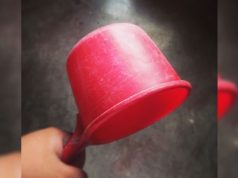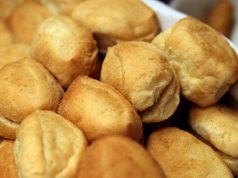The long-time practice of repurposing Danish cookie tins as sewing kits was given the spotlight again after a viral tweet shared to make hinged enamel pins inspired by it.
Twitter user @nautikalmiles was looking for suggestions on the design of hinged enamel products when he shared his caricature of the blue container used as a sewing kit/.
omg i was looking at hinged pins earlier and suddenly got this idea. humour me please…. ??? pic.twitter.com/MbIycidxkM
— jc ?@ APCC (@nautikalmiles) May 30, 2018
This idea immediately caught the appeal of many users as they relate to such tradition of their families.
“This is literally my family so much, for years in the Virgin Islands we had those Danish cookie tins reused for storage! Amazing pin design!” one user replied.
Well-loved cookies and containers
This practice had reached many countries in the world, from Asia to Europe, wherein the most popular containers came from the iconic Royal Dansk.
The National Public Radio article described it as a “universal recollection.”
“As it turns out, a far more universal recollection is the disappointing experience of prying open one of those blue tins only to find a bunch of sewing supplies,” Leah Donnella wrote.
This worldwide trend also became part of Filipino culture, as depicted by Filipino-American comedian Jo Koy through a humorous video skit in 2016.
What my filipino mom does with the Danish Cookie can. #countrycrock who else's mom does this?? Share with friends!
Posted by Jo Koy on Thursday, February 18, 2016
How the strange custom on the use of Danish cookie containers as sewing kits developed is a mystery that many people have been trying to solve ever since.
How it all started
A Buzzfeed article tried to explore the origins of this strange custom by associating it with the history of packaging.
The author suggested that cookies were once stored in water-proof paper cartons in 1896 during the so-called birth of consumer packaging attributed to the Uneeda Biscuit products of the National Biscuit Company.
The article further explained that Royal Dansk started the popularity of the blue tins when it rolled out its products in 1966.
Then, when the need to recycle or reuse came during the Vietnam War, the metallic cookie butter containers became the choice of many for sewing supplies.
Meanwhile, Atlas Obscura noted another European cookie company Huntley and Palmers that introduced the use of cookie tins with elaborate designs around the world.
“When travel across the pond started happening more frequently in the 20th century, people’s hunger for the tins increased, as Smithsonian notes. So when these striking blue tins arrived, people saw them not as disposable, but rather as natural storage containers,” the author wrote.
Although both Royal Dansk and Huntley and Palmers were high-end brands back then, the containers from the latter were the ones mostly sold as sought-after collectibles today.
Form of recycling
There are also other items that people store in cookie butter tins, based on the research from Atlas Obscura.
While the most popular items are still sewing supplies, other objects include buttons, cloths, keys and other odd heirlooms such as letters and electrical wire nuts.
The Twitter user also shared a cartoon of a repurposed ice cream container to store meat in refrigerators as another relatable Filipino recycling habit.
one last thing before i go to bed! ???i have no idea if blue dyed metal is possible for hinged pins, but it would be so cool if it was pic.twitter.com/YcVNl3Wrap
— jc ?@ APCC (@nautikalmiles) May 30, 2018









